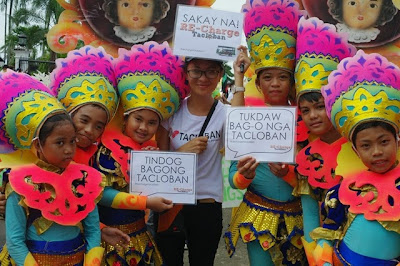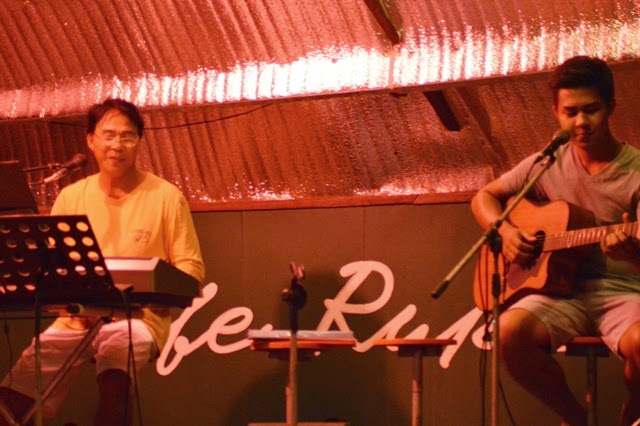The various dialects of Eastern Visayas
 |
| This photo was taken during the celebration of Tacloban City fiesta last 2014. |
Learning is fun especially if you’re interested in exploring new things that come your way each day. One of my interests is learning on how to speak the various dialects of Eastern Visayas.
I traveled a lot in the past few weeks touring around the beautiful places of our region. I never had a travel in my college years. It’s all about waking up in the morning, speaking behind the microphone and studying at night.
Since I was a kid, I’ve heard people speaking in “bisaya” and I find it very short but sweet to the ears.
I found out that in Eastern Visayas, the inhabitants of some towns and provinces were speaking in “bisaya”. The province of Southern Leyte widely speaks “bisaya” as the place was closer to Central Visayas where large numbers of inhabitants were speaking the same dialect.
The word “pangga” is short for “palangga” means “loved” is the sweetest among all words I had ever heard in my entire life. That sweet endearment would indulge your senses realizing that you are really loved. Speaking fluently in “bisaya” was one of my frustrations in life.
In Leyte, people speak in “waray-waray”. Inhabitants are called “waray”. But we have also different accents and expressions like if someone came from Jaro and Carigara, these two has cute expressions that would probably announce that indeed they are from these towns.
However, in the small province of Biliran – some of their people were speaking in waray-waray and bisaya. Like in the island of Maripipi, where the island of Sambawan is a part of, --are speaking in “bisaya”. But in some parts of the island province are speaking in waray-waray especially those towns facing the province of Leyte.
It’s very interesting to know these facts about the various dialects of our region. In the provinces of Samar, people also speak in waray-waray but it differs on accents and expressions. A Samarnon is identified if he is from Eastern, Western or Northern through his/her accent and expressions. As I have observed, people from the West speaks slow and sweet.
There were certain expressions that you can only hear from their mouth. Also in Calbayog City, people here connect their words with a preposition of “san”; the word “nano” means “ano” in waray.
They tend to add some letters of few words in waray-waray that made them identified as Calbayognon.
While when I visited the province of Northern Samar, I tend to hang up and study their dialect. People living in towns located in the mainland of the province speak in “waray-waray” but it is completely different in accents and expressions.
Actually, about 90% of what they’ve talk was not understandable for me. It was really different I tell you. They speak so fast. I remember only the word “yaon” which means “meron”.
There were island towns of Northern Samar like San Vicente, Capul and San Antonio. The inhabitants of these three towns speak differently. San Antonio and San Vicente inhabitants speak “bisaya”. While in the historical town of Capul, people living there speak “inabaknon”.
Dr. Cinco, the Municipal Health Officer of the said town said that “inabaknon” is not a dialect, but it’s a language. In the Philippines, Capuleneos are very unique. Their language and culture was very different to the other. It’s cute though my nose bleeds every time they talk to me as if I know how to speak “inabaknon”.
I remember the word “mangan” which means “let’s eat”. Another was “lalang” means “a male guy”. I enjoyed my temporary stay in Capul during my visit for my research. Capul is closer to Masbate which is just 30 minutes away from the island. People there were very hospitable and kind.
In some part of Eastern Samar, however, speaks literally with expressions connected into it.
One is identified as “Estehanon” when he’ll speak with accents and expressions like “atara dama it”. As I have observed, people usually omit some letters that shortens the words and somehow understand it differently in other dialects like in “waray-waray”. I have a lot of friends who came from Eastern Samar and I loved them very much.
There’s a slow phase in speaking that creates their identity as “estehanon”. But this accents and expressions differ if someone came from the South or North part of Eastern Samar.
It’s really interesting learning the various dialects in Eastern Visayas. Because of my interest in learning these things I tend to write and memorize every word I learned from various people who speak in their dialects.
Sometimes, I thought of working or living in the place of “bisaya” people so I can speak their dialect too. :)


Comments
Post a Comment